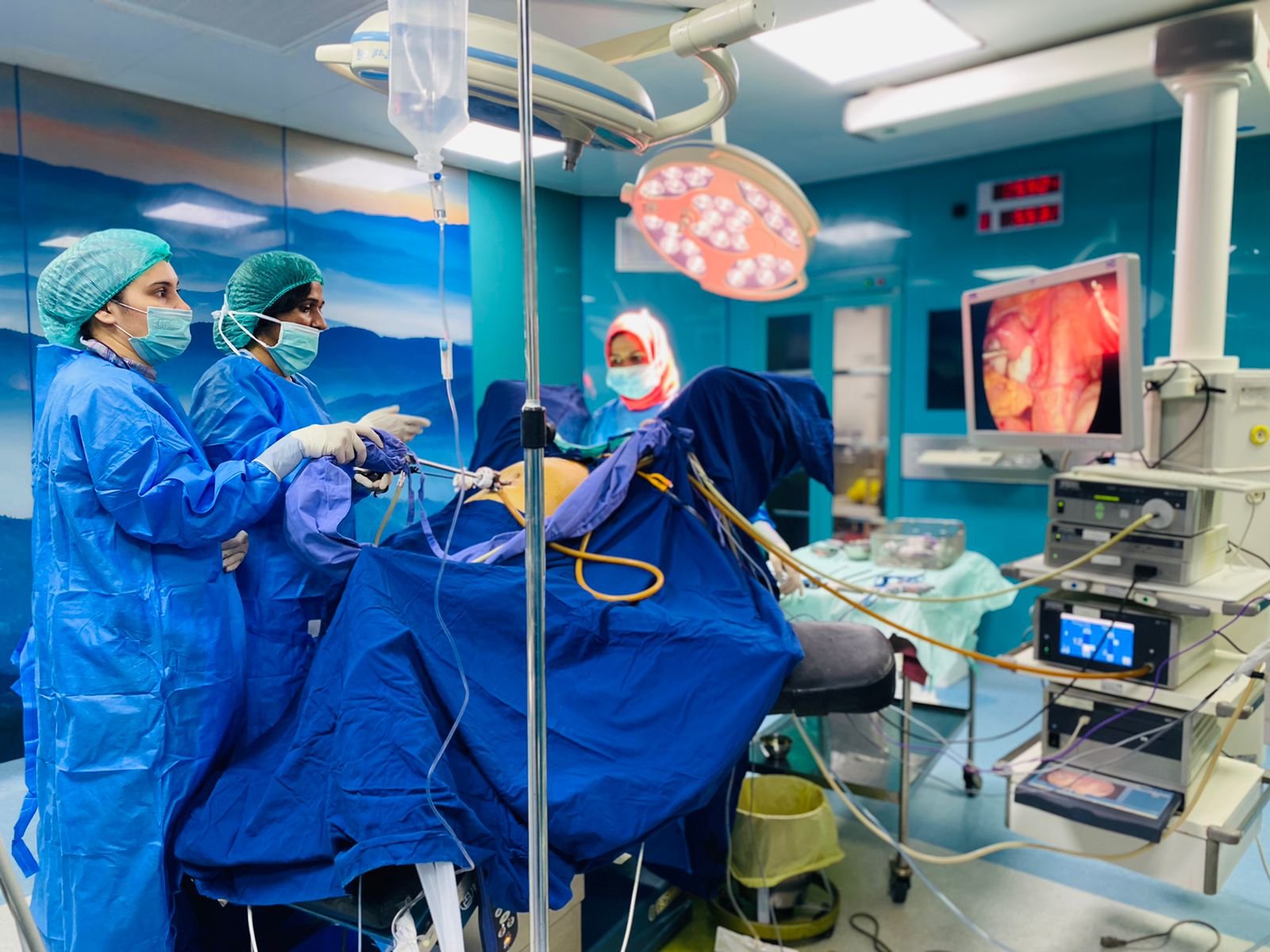Pelvic Prolapse Repair
Home > Gynae Treatments > Pelvic Prolapse Repair

Pelvic prolapse, also known as pelvic organ prolapse (POP), is a condition where one or more pelvic organs descend or "prolapse" from their normal position and bulge into the vaginal canal and in severe cases, outside the vagina. The pelvic organs that can be affected include the uterus, bladder, rectum, small bowel, and the top of the vagina.
Pelvic prolapse occurs when the pelvic floor muscles and ligaments, which provide support to the pelvic organs, become weakened or stretched. This weakening can happen due to various factors, such as childbirth, aging, hormonal changes, obesity, chronic coughing, or previous pelvic surgeries.
The repair of pelvic prolapse depends on the severity of the condition and the specific organs affected. There are both non-surgical and surgical treatment options available. The choice of treatment is tailored to the individual's symptoms, overall health, and personal preferences. Here are the main approaches for repairing pelvic prolapse:
Prof Dr Rehana Aamer Khan is heading the team of Gynecologist and Minimal invasive surgeons in Lahore for best case of our Gynae patients. Prof Rehana Aamer Khan is pioneer of Laparoscopic surgery in Lahore and she is first gynecological Robotic Surgeon of Pakistan.
Pelvic Floor Exercises: these exercises aim to strengthen the pelvic floor muscles, which can help provide support to the pelvic organs and alleviate mild prolapse symptoms.
Pessary: A pessary is a device inserted into the vagina to provide support and lift to the prolapsed organs. It can be an effective non-surgical option for managing pelvic prolapse, especially in women who wish to avoid surgery or are not good candidates for surgery.
Vaginal Mesh : In some cases, surgical repair may involve the use of synthetic mesh or a sling to provide support to the weakened pelvic floor. However, the use of mesh has been associated with complications.
Vaginal Prolapse Repair: This surgery involves repairing the weakened pelvic floor and supporting the prolapsed organs through the vagina. The surgeon may use stitches or grafts to reinforce the tissues and lift the organs back to their normal position.
minimally invasive surgical techniques like laparoscopy or robotic surgery may be used. These procedures involve making small incisions in the abdomen to access and repair the pelvic organs. The benefits of minimal invasive surgery are
The choice of surgical approach depends on various factors, including the type and severity of pelvic prolapse, the patient's health status.

We take immense pride in offering the services of the best gynecologists and minimal invasive (laparoscopic & Robotic) surgeons for the comprehensive treatment of pelvic prolapse. Our esteemed team comprises highly skilled and experienced gynecologists who specialize in pelvic floor disorders and are dedicated to providing exceptional care to women facing pelvic prolapse. Additionally, our expert minimal invasive surgeons in Lahore are well-versed in the latest laparoscopic & Robotic techniques, ensuring precise and effective treatment with minimal discomfort and quicker recovery times.
We utilize advanced technology and diagnostic tools to accurately evaluate the extent of pelvic prolapse and offer the most appropriate and evidence-based solutions.
With a focus on patient well-being and safety, our gynecologists and minimal invasive surgeons are committed to delivering the highest quality of care. Their expertise, coupled with a patient-centered approach, ensures that women receive optimal treatment outcomes, restoring their pelvic health and enhancing their overall quality of life.
Contact UsCopyright @ . Design By Blizin Technologies